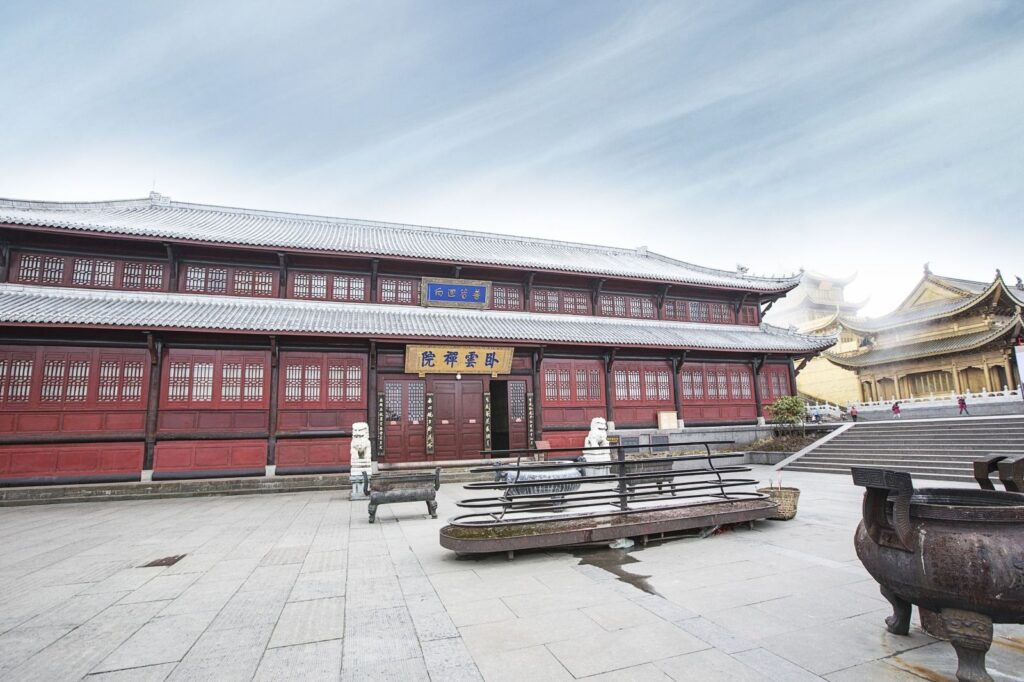Woyun Chan Monastery is situated at an elevation of approximately 3064 meters. Established during the Ming Dynasty’s Jiajing reign by the monk Xingtian, it is named ‘Woyun An’ due to the encircling white clouds around the rocks, with the temple seeming to lie within the clouds.
At the end of the Ming Dynasty, the buildings decayed. In the second year of the Qing Dynasty’s Kangxi era (1663), with the financial support of the Ministry of War’s Vice Minister Ha Dian and other civil and military officials, the monk Ke Wen from Fohuo Temple and the Four Friends of Woyun rebuilt the temple, sculpting and enshrining the three great bodhisattvas: Manjushri, Samantabhadra, and Avalokiteshvara.
During that time, the roof was covered with tin tiles, and every time the clouds cleared and the sun shone, the temple would gleam with a silver light, earning it the nickname ‘Silver Summit’ of Mount Emei. From the seventh year of the Daoguang era to 1932, the temple suffered several fires and was rebuilt multiple times. The existing structures underwent maintenance in 1953. After 1989, the monks carried out several renovations, restoring the mountain gate and the main hall. The main hall features the Mahavira Hall on the lower level and the Jade Buddha Hall on the upper level, with two halls in one building but facing opposite directions, which carries a profound meaning.
The temple is built on the top of the Western Peak, lying on the white clouds, truly living up to its name. Originally, there was a pool beneath the temple, shaped like a half-moon, deep and broad enough to provide water for a thousand people, anciently known as the ‘Avalokitesvara Water’ or ‘Jingluo Spring’. In front of the pool, there was originally a stone archway inscribed with the words ‘Meng Shen Li Jing’.
To the east of the temple is the Xiaodu Guangtai, with columnar basalt rocks standing beneath the platform, resembling iron castings, known as ‘Vajra Mouth’. Under the platform of the Xiaodu Guangtai, there are towering rocks known as ‘Qibao Rock’. Next to the platform, there is a small peak that rises, shaped like a cone, anciently called ‘Flying Bell’. Most of these relics no longer exist.
The main structure of Woyun Chan Monastery, due to long-term neglect and decay, was restored in 2005 by the Mount Emei Buddhist Association according to the law, and was completed in June 2006, regaining the solemnity of the ‘Silver World’. The restored Woyun An’s architectural layout faces east and is composed of the Maitreya Hall, Jade Buddha Hall, and wing rooms forming a quadrangular compound. The entrance to the temple is through a wooden structure with a dougong-style beam frame, double eaves dripping water, a hip-roof style, and an aluminum alloy tile roof. The opening hours and business status are subject to the day’s opening conditions.


